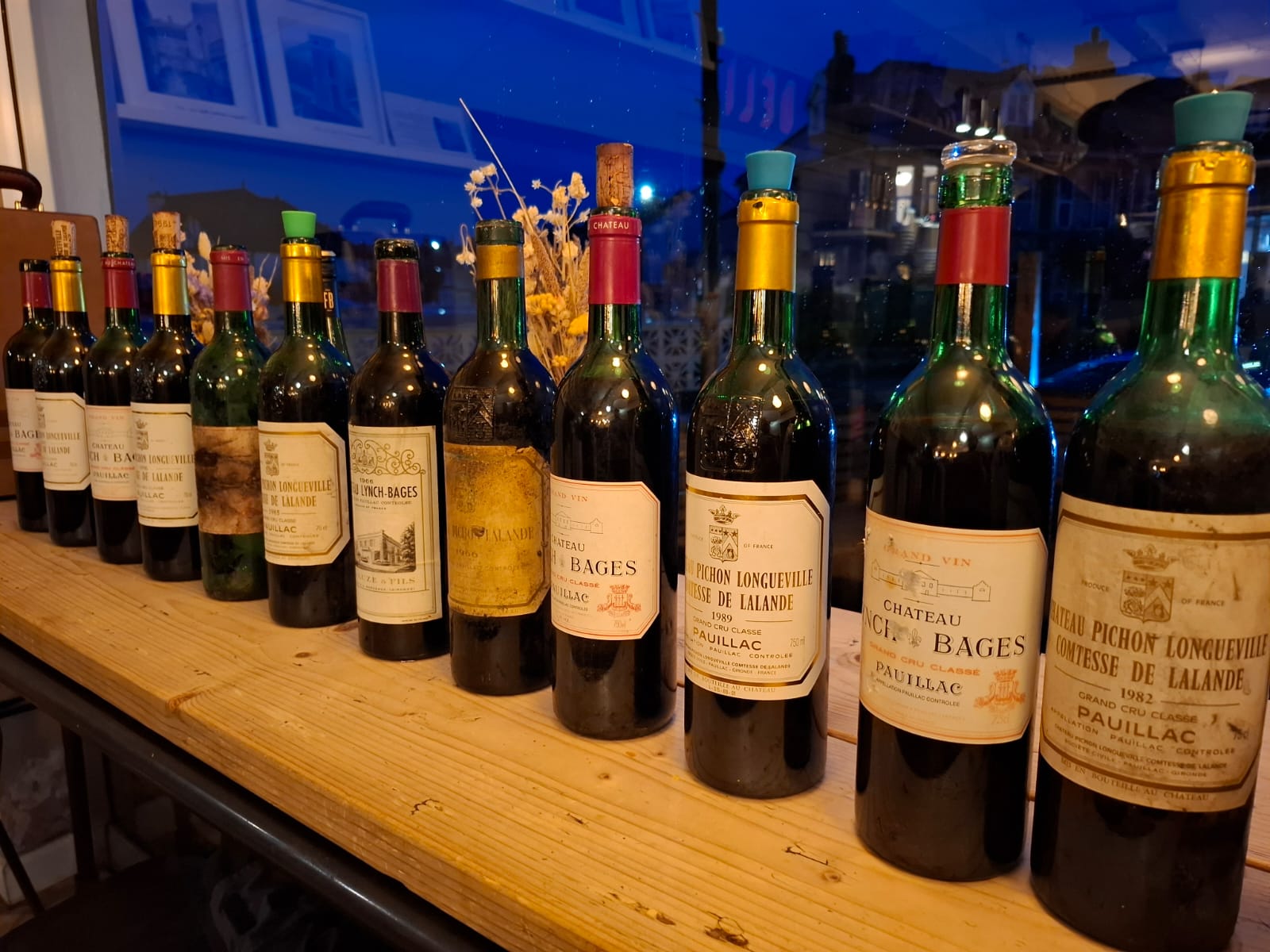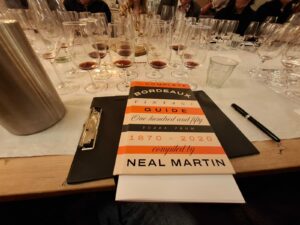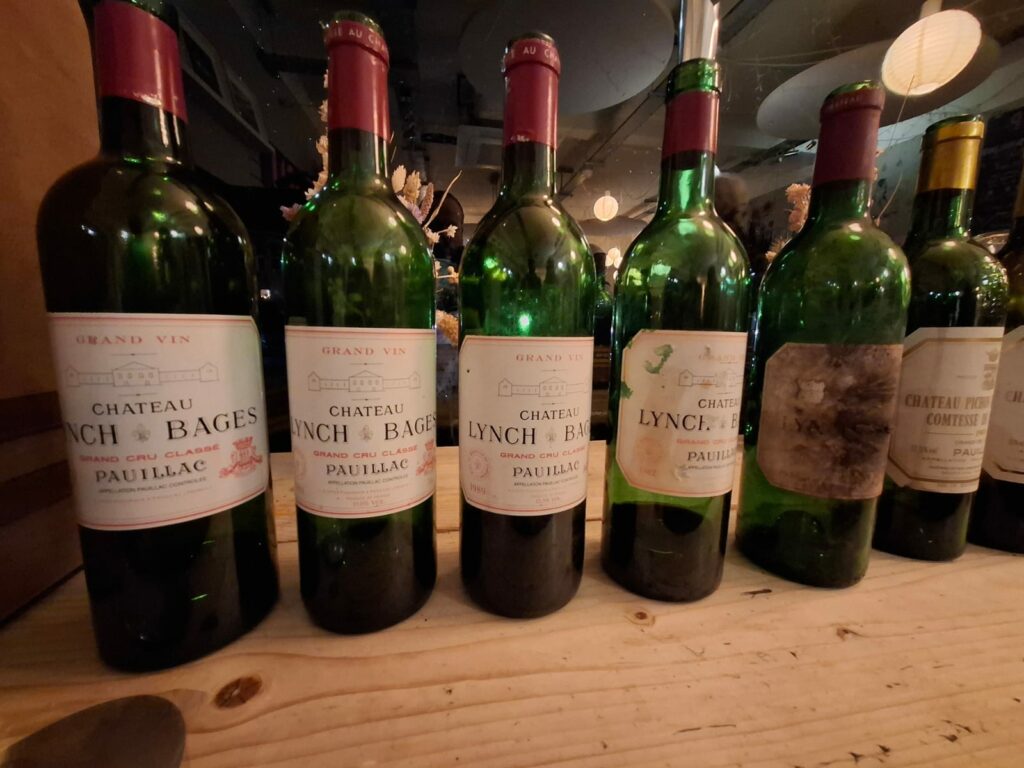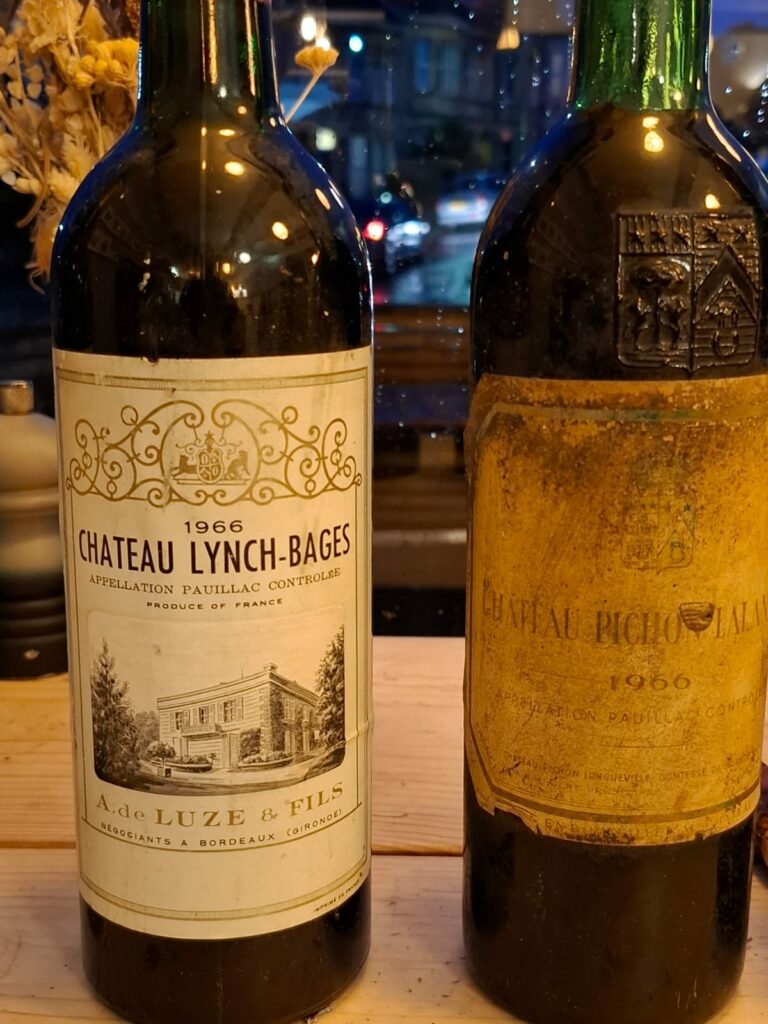

This was a recent tasting I led for my local tasting group, the Jeroboam Club, in the UK. They had selected a pair of well regarded, and much loved, chateaux that members were likely to have in their cellars. As usual for the Jeroboam Club, the majority of wines were supplied by members and I was lucky to be able to take my pick of what was offered in order to compile a parallel vertical, featuring both wines in the same six years.
Introducing the evening, I spoke about how Pichon Lalande is one of the first chateaux you pass, driving north up the Medoc from Saint Julien into Pauillac. Despite being next door to Chateau Latour and across the road from Pichon Baron, Pichon Lalande is a very singular style of Pauillac that is frequently more elegant and fragrant than its more firmly-structured neighbours.
I wanted to get away from the out-dated characterisation of Pichon Lalande as a somehow ‘feminine’ style wine, usually made in contradistinction to Baron’s ‘masculine’ profile. These are descriptors I have banned from my tasting notes and which have no place in modern wine discourse. A significant portion of the Pichon Lalande vineyard is actually located south of the Pauillac border, technically falling within Saint Julien. This is the reason for the wine’s elegance – nothing to do with a female character or Madame de Lencquesaing’s ownership: it’s terroir! In addition, the wine has traditionally contained a lower proportion of Cabernet Sauvignon and more Merlot (AND more Petit Verdot) than is common in Pauillac, lending it a more fragrant and floral personality. This is no longer the case today, as the vineyard has been re-structured to a more Cabernet-centric configuration and one recent vintage has even been 100% Cabernet Sauvignon. In this sense, some of the vintages we were about to taste would present a glimpse into Pichon Lalande’s past.
If Pichon is a slightly individual expression of Pauillac, Chateau Lynch Bages is much closer to the archetype of the appellation. Lying inland of the town of Pauillac itself, on the Bages plateau, this is a much more classical and Cabernet-led style. Often showing the essence of Pauillac’s blackcurrant and cassis fruit, married to notes of graphite and cedar, with imposing tannins, Lynch Bages has laboured under the soubriquet of ‘poor man’s Mouton’ that I dislike almost as much as referring to Pichon Lalande as feminine! There are stylistic parallels between Lynch and Mouton when the wines are young, but at today’s prices Lynch Bages isn’t ‘poor man’s’ anything and there are certainly vintages in which the 5th growth outshines the 1er Cru.
A final interesting point was that there was a period from 1985-2000 when Chateau Pichon Baron, over the road from Pichon Lalande, was managed by Lynch Bages’ owner Jean-Michel Cazes. Tasting wines such as the 1985, it was fascinating to speculate how Cazes might have been eyeing what was happening over at Pichon Lalande and how that might have fed into his own winemaking both at Baron and at Lynch Bages.
In terms of serving order, I intentionally avoided a strictly chronological tasting. Everyone was excited to taste the 1966 wines and I wanted them to show at their best. It is a lovely vintage but, approaching 60 years old, the wines are inevitably more delicate and would likely be blown away by if served after the more powerful 1982s. One solution would have been to start with the 1966s and work backwards to the 2005s but I wanted people to ‘warm up’ rather than jump straight into the more complex and mature wines. Also, it’s always good to finish with a bang, on a headline vintage.
My solution was to begin with the youngest wines and work from 2005, through 1996, to 1985 and then 1966. This would give a progressive view of maturity, complexity and finesse. After the 1966s, which did carry an element of risk that they could be over the hill, we returned to the twin high points of 1989 and 1982, finishing with structure and power. It was great to have these final two side-by-side, as I have a feeling that 1989 is the natural successor to ’82 and maybe my favourite vintage of the decade.

The 2005s performed to expectations. I can’t work out whether this is the last old school vintage – stern, structured and taking ages to come around – or the first of the new era – record-breaking levels of tannin, alcohol, acidity and price! Actually, it is probably more of a hybrid, transitional year. The 2005s are richer and fleshier than anything made in 1986, often used as a comparison because they also took a long time to soften, but the farming and winemaking was of an era of aggressively low yields and high extraction. Wines were often shaped to meet a Parker ideal, especially on the right bank, and production definitely lacked the precision that is such a feature in Bordeaux today. That said, Lynch Bages 2005 is a future star, showing immense promise, even if it remains fearsome and unapproachable for now. The Pichon matched its reputation with the critics, sadly. This is a rare 2005 to start drinking, and is disappointing for this great chateau.

This is a superb, compact and classical Medoc vintage that is just starting to open up and hit a plateau of maturity, although there’s masses still to come from the top wines. I was slightly surprised the Lynch Bages wasn’t a notch or two better but it is still a delicious drink for now and over the next decade or so. It just lacks the extra gear that the Pichon Lalande features.
Is there a vintage held in higher esteem, or regarded with more affection and nostalgia, by claret lovers than 1985? Whisper it, but I think the quality of 1985 might be slightly over-stated by many people. A lot of the wines seem fully mature – even Cheval Blanc – and it is only very few that still have more to offer. Pichon Lalande, a bit like Ducru Beaucaillou, now seems to be over its peak and moving into gentle decline. Still very tasty, it is not yet fraying at the edges; but it is starting to become a little threadbare! 1985 is one of those years when I reckon Lynch Bages is at 1st growth level, and better than several of them. Along with Chateau Margaux, this must be one of the high points of the vintage and I would love to compare it to Leoville Las Cases. We may have been blessed with a particularly good bottle, but this was a stunner.
It was probably Michael Broadbent who first started referring to 1966 as a long-distance runner. I sort of understand the descriptor – the wines are finely muscled and taut, without any surplus flesh or the sheer concentration of, say, 1961. That said, I don’t think ‘long-distance runner’ conveys the sheer pleasure of good 1966s; it makes them sound a little scrawny. Of course, there was an element of risk with these two bottles but we really lucked out. Both had good levels and colours and even the negociant-bottled Lynch Bages exceeded expectations before it started fading away. The Pichon Lalande showcased all that is best about this year, being fine-boned, elegant and expressive. Maybe the 1996s will follow a similar trajectory?

This was a pair of wines, from a great year, both at the height of their powers. The combination of intensity, savoury richness and structure makes 1989 one of my favourite vintages and I generally regard it above 1982 for drinking today. Interestingly, it is a year in which none of the 1st growths really excelled, other than Haut Brion and Petrus. Both were terrific examples, and both bottles showed the advantages of excellent provenance and storage. It would be fascinating to compare 1989s from Pichon Lalande and Pichon Baron, the latter having been made by Jean-Michel Cazes in addition to his Lynch Bages. In 1989, Lynch is absolutely at 1st growth level for my palate.
We finished with perhaps the most famous Bordeaux vintage of the last 50 years. Both wines demonstrated some of the sweetness, richness and concentration for which 1982 is known. What surprised me was the degree of sophistication and finesse to be found in both wines. Fully mature, and less impactful than the Pichon Lalande, the Lynch Bages had a core of real elegance that I would not have looked for in such a powerhouse vintage. The Pichon Lalande, perhaps as its structure and fruit have started to recede, showed finely-woven tannins and superb energy. Undoubtedly it was a good call to end with the 1982s and not the more delicate 1966s.